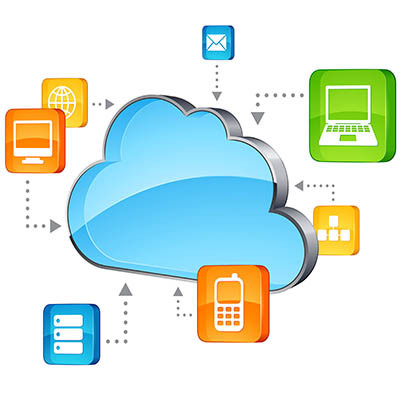Ferrum Technology Services Blog
With remote work standing front and center for the past couple of years, it’s no wonder that a conversation has begun about the benefits and shortcomings of it. It is now clear that remote work is something that is not going away anytime soon. Let’s take a look at how businesses might retain remote operations without making too many sacrifices in the process.
At the heart of it, cybersecurity preparedness is a team effort, not necessarily a singular one. Everyone must be aware of and engaged in cybersecurity best practices. As such, training is a necessity. To help you ensure that your cybersecurity training is as effective as possible, we’ve put together a couple of curriculum design tips and tricks to keep in mind.
When you run a business, solid decision making is crucial to achieving success. This goes from hiring and managing your staff, dealing with your prospects and customers, and procuring tools and resources that make your business possible. Today, technology is not only important, it is a major consideration when hashing out your yearly (or quarterly) budget. Let’s go through a couple of tips on how to make the best technology decisions for your company.
We talk a lot about how the cloud is growing in utilization, and considering the circumstances of the past 18 or so months, it’s not surprising. However, what might be surprising to you is that this movement to the cloud is not necessarily to the detriment of the on-site data center. In fact, there are several reasons why businesses still consider in-house data centers to be the ideal solution. But why is this?
As a business owner in a sector that is not necessarily dedicated to technology, chances are that you do not need to know everything there is to know about computer hardware. That being said, it helps to have a passable knowledge of the various hardware terms you might use on a daily basis. This will especially make it easier for you to talk to your technician or your service provider—whoever handles your technology.
Technology has enabled some of the greatest changes in the business world, so it makes sense that your company should try to implement it as needed. Unfortunately, it can be a bit confusing, especially if you have not thought about it in recent years. Thankfully, there are three pillars that can hold up a digital transformation strategy and enable change for your business.
The COVID-19 pandemic has forced many businesses to respond quickly and radically change operations, but despite the circumstances, productivity is still at the center of most business professionals’ minds. If we can learn more about how businesses have managed to thrive even in the face of the pandemic, we can learn more about how to succeed when things get back to “normal,” whatever that looks like, particularly in regards to technology and the role it has played over the past year and a half.
Today’s business takes in more data than ever before. The sales process is built on understanding target companies, and even the businesses that already purchase goods and services of your company are constantly providing more information to help you improve your relationships. Unfortunately, not a lot of businesses utilize this data to its full potential. Let’s take a look at a few ways a business can utilize data to improve their position in the sales process.
Some companies have been in business for so long that they are still relying on legacy applications in their operational system. This could be for many reasons, but one of the biggest is that there is simply not a better option—at least, not in their eyes. Enter virtual machines, the solution that makes these kinds of businesses possible without severely compromising on network security.
Data breaches are an unfortunate reality that businesses have to contend with, but small businesses often do not give them the consideration that they deserve. It is critical that you consider security challenges and take these risks seriously. Let’s examine how you can overcome some of the many challenges that small businesses have with cybersecurity.
The pandemic placed a heavy emphasis on the capabilities for organizations to shift to remote operations, and if you were one of the many companies to seek additional equipment and hardware to make this happen, you might have noticed a lack of product out there. The global chip shortage has made it difficult for companies to procure new equipment, but there is another darker side to this story, particularly in regards to issues in the supply chain.
Wrangling an email inbox that has been left to its own devices for months can be a challenge, especially for those who sign up for email lists and never unsubscribe from anything. If this sounds like you, be sure to read on and discover ways that you can finally take back control of your email inbox.
Unfortunate as it might be, one single solution is not going to eliminate any and all of your cybersecurity woes. That said, there are plenty of ways that you can mitigate the majority of threats and minimize their chances of success. One of the best ways is to construct a culture of cybersecurity awareness within your organization that encompasses all employees, including upper-level management and the C-suite. Here are 11 ways that you can build up an enduring culture of cybersecurity awareness for your business.
There are a lot of threats out on the Internet, and the good news is that many of them have absolutely no chance to threaten your business. The problem is that it only takes one to really put your business at a major disadvantage. One threat is all it takes to lock down your files and hold them for ransom. One threat is all it takes to corrupt your databases. One threat, if it got bad enough, could conceivably end your business.
Business hardware is never a small investment to make, so for a business to make the best use out of their invested funds, their hardware needs to be seriously considered. One way to do so is to use a virtualized environment, whether that environment is hosted onsite or in the cloud. Let’s consider the inherent benefits of virtualization.
Think about how different your computing practices are today compared with the way you did things 20 years ago. If you’ve been around that long, there is a good chance that the way you go about things is much, much different than it was at the turn of the century. The biggest difference today is how most people use mobile devices to do a large percentage of their computing, as compared with past generations. Today, we will take a look at some of the innovations that mobile devices have made to be able to stand alone at the top of the computing food chain.
Most businesses rely on specific software, and a lot of it. It’s used to manage, protect, and facilitate your business. Today’s software is more flexible than ever before, and while control over your business’ IT systems is always better, the ability for a business to get the tools it needs may take you in a different direction. Let’s take a look at some considerations you should make when you are looking to get software for your business.
For any business continuity strategy to be complete, a data backup strategy needs to be involved. This is often easier said than done: there are a lot of elements that need to be considered, and some data can go overlooked if the solution isn’t maintained. However, considering the likelihood of data loss without one, a data backup is an indispensable component to prioritize and evaluate over time.
When your business is in the position to add new technology, the process can be pretty confusing. You try to make good business decisions every time, but with technology, there are more variables that need to be weighed. Is the technology going to help the business? Is it the right technology for what I’m trying to achieve? What is the actual cost? Today, we will outline three strategies that can help you make better IT decisions.




















